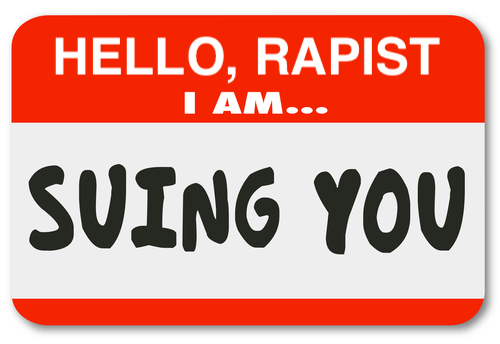Victims of sexual assault in Nevada may be able to bring a civil lawsuit against the perpetrator based on the law of battery, false imprisonment, and/or intentional infliction of emotional distress in Nevada
You may also have a Nevada negligence cause of action against any parties that may have contributed to the rape occurring. You may fight for compensatory damages, such as to pay for your:
You can also pursue punitive damages against the defendant, which can be far larger than the compensatory damages.
There is no statute of limitations in Nevada to file a civil lawsuit for injuries stemming from sexual assault if you were an adult victim. If you were a child victim, you have 20 years to file a claim after you turn 18 or learn that the assault caused your injuries (whichever is later).
|
NEVADA RAPE CASES |
Criminal prosecution |
Civil prosecution |
| Charge/cause of action |
Sexual assault | Battery |
| Legal definition | Non-consensual sexual penetration | Intentional use of unlawful physical force |
| Type of law |
Statutory (NRS 200.366) | Common law |
| Is penetrative sex required? | Yes | No |
| Victim’s role | State witness | Plaintiff |
| Rapist’s role | Defendant | Defendant |
| Burden of proof | Beyond a reasonable doubt | By a preponderance of the evidence |
| Examples | Forcible rape or raping an unconscious person | Choking, holding down, or groping |
| Penalties | Prison, fines, and sex offender registration | Money damages and injunctive relief |
| Defenses | Consent or false allegations | Consent or false allegations |
| Statute of limitations | None or 20 years, depending on the case | None or 20 years, depending on the case |
In this article, our Nevada personal injury attorneys discuss sexual assault lawsuits in Nevada. Click on a topic below to jump to that section.
1. Whom to sue
If you are a sexual assault victim, clearly you can sue the people who physically raped you. In addition, you may be able to sue anyone else whose wrongdoings may have allowed the assault to occur.
Example: Leah lives in a dorm at UNLV. One day the lock to her door breaks. She informs Res-Life right away and repeatedly asks them to fix it, but they never do. One night a vagrant enters Leah’s room and sexually assaults her. Leah could sue UNLV for negligence for failing to fix her lock, which made her vulnerable to being physically harmed.
Certainly, Leah, in the above example, could also sue the vagrant. However, chances are that UNLV has much deeper pockets and could pay a much higher settlement.

Nevada rape victims can sue for battery and other torts.
2. What to sue for
Nevada civil law does not have a specific “sexual assault” or “rape” cause of action. Instead, there are various civil wrongs (called “torts”) that you may sue for. Four common assault-related causes of action in Nevada are:
- battery
- false imprisonment
- intentional infliction of emotional distress
- negligence
Battery
Battery is a broad civil cause of action that comprises any type of illegal physical touching. You have to prove the following four elements in order to prevail on a battery claim:
- The defendant willfully and unlawfully used physical force or violence on you;
- The defendant intended to cause harmful or offensive contact;
- The harmful and offensive contact did in fact occur; and
- The harmful and offensive contact caused your damages.1
One benefit of suing for battery is that you do not have to show that the defendant physically penetrated you. All you need to show is that unlawful physical touching occurred, which can include such actions as holding down, choking, or groping.
False imprisonment
Like it sounds, false imprisonment is physically trapping you. Specifically, you have to prove the following four elements in order to prevail on a false imprisonment claim.
- The defendant acted with the intention of confining you within boundaries fixed by the defendant;
- You did not consent to the confinement, which violated your right to be free from restraint of movement;
- You were conscious of the confinement or were harmed by the confinement; and
- The confinement caused your damages.2
Since you are presumably physically restrained during the attack, you can sue for false imprisonment as well as battery.
Intentional infliction of emotional distress
It is self-evident that sexual assault causes not only physical harm but also mental harm. You have to prove the following three elements in order to prevail on a claim of “intentional infliction of emotional distress”:
- The defendant acted with extreme and outrageous conduct with either the intention of — or reckless disregard for — causing emotional distress;
- You suffered severe or extreme emotional distress; and
- The defendant’s conduct caused your emotional distress.3
Note that “intentional infliction of emotional distress” is often abbreviated IIED. It is also called the “tort of outrage.”
Negligence
You may have a negligence lawsuit against anyone whose actions (or lack of action) allowed the rape to occur. You have to prove the following four elements in order to prevail on a claim of negligence:
- The defendant owed a duty of care to you;
- The defendant breached that duty;
- The breach was the legal cause of your injuries; and
- You suffered damages.4
When suing for negligence, you never need to show that the defendant purposely put you in harm’s way. Instead, you just need to show that the defendant failed to behave how a reasonable person would act under the circumstances, and that failure provided the opportunity for the injury to occur.
3. When to sue
Child victims
If you were a child under 18 when you were sexually assaulted, you have 20 years to sue after either:
- you discover — or reasonably should have discovered — that sexual abuse caused your injuries; or
- you reach 18 years old (whichever occurs later)5
Example: Jill is sexually abused by her uncle as a child. Jill develops a bladder disorder that she endures stoically until age 21 when she goes to the ER for urinary retention. The doctor informs her that her disorder stems from trauma to her vaginal wall. Since Jill just learned that the injuries were caused by the abuse, Jill now has 20 more years (until she is 41) to sue her uncle for sexual abuse.
Adult victims
If you were at least 18 when the sexual assault occurred, you can sue the perpetrator at any time.6

There is no statute of limitations for adult rape victims to sue.
4. Damages
As a sexual assault victim, you can sue for various compensatory damages to cover your expenses for:
- medical bills (including mental health counseling),
- lost wages,
- loss of future earnings,
- pain and suffering, and
- attorney’s fees
Should the case go to trial, your attorney would also fight for large punitive damages. Depending on the case, punitive damages can be as much as three times the amount of compensatory damages or more.7
You can also ask for “injunctive relief,” such as an order for the defendant to stay away from you. However, the judge would not be able to order the defendant to go to prison. Only a judge in a criminal case can impose incarceration.
5. Burden of proof
As a plaintiff in a personal injury lawsuit, you generally have the burden to prove your cases by a “by a preponderance of the evidence.” In plain English, this means that the defendant more likely than not caused your injuries.8
Common evidence in sexual assault cases include:
- video footage,
- text or voice communications,
- eyewitnesses,
- rape kit results,
- medical records, and
- expert medical testimony
Note that the burden of proof is very different in civil and criminal cases: If a prosecutor is charging a person with rape in Nevada, the prosecutor has the burden to prove guilt “beyond a reasonable doubt.”
“Beyond a reasonable doubt” is a much higher standard than “by a preponderance of the evidence.” Therefore, it is easier for an alleged rapist to be found liable in civil court than to be found guilty in criminal court.
6. Defenses
Defendants being sued for damages arising from a sexual assault might fight back by arguing:
- the rape never took place,
- you consented to whatever sexual acts took place, and/or
- you are falsely accusing the defendant out of anger or revenge or a misunderstanding
Note that the defendant may try to intimidate you by counter-suing, such as for defamation and/or harm to reputation.
7. Criminal charges
If you are a sexual assault victim, you may choose to file a police report against your rapist in addition to — or instead of — filing a civil lawsuit. You have no obligation to file a police report prior to initiating a civil lawsuit.
If you wish to file criminal charges, you are strongly advised to have an attorney help you compose your victim statement. Lawyers are skilled in conveying what exactly the perpetrators did, and what the prosecutors should charge them with.
Sexual assault is the most serious crime in Nevada after murder, carrying a possible sentence of life in prison. Learn more about the Nevada crime of sexual assault under NRS 200.366.

You can sue your rapist even if they face no criminal charges.
Additional resources
The rise of #MeToo and Time’s Up are proof that victims of sexual violence are being believed and taken seriously more now than ever before. If you are a survivor, please seek help. Selected resources are:
- RAINN – National sexual assault hotline providing free, confidential support for survivors 24/7.
- Crisis Support Services of Nevada – Free, confidential 24/7 support to survivors throughout Northern Nevada.
- Signs of Hope – 24/7 rape crisis hotline.
- The Nevada Coalition to End Domestic and Sexual Violence – Statewide advocacy, education and support of the front-line organizations that help victims.
- Nevada Victims of Crime Program – Financial assistance for survivors.
Legal References
- See Restatement (Second) of Torts, §§ 13 and 18 (1965); see, for example, Jimmy Golen, Soccer star Ronaldo sued, accused of rape by Nevada woman, AP (October 1, 2018)(see the complaint).
- See Restatement (Second) of Torts, §§ 35 (1965).
- Jordan v. State ex rel. DMV & Pub. Safety, 121 Nev. 44, 110 P.3d 30 (2005); Maduike v. Agency Rent-A-Car, 114 Nev. 1, 953 P.2d 24, 26 (1998).
- Turner v. Mandaly Sports Entm’t, LLC, 124 Nev. 213, 180 P.3d 1172 (2008).
- NRS 11.215.
- NRS 11.190. SB 129 (2023). NRS 11.217.
- NRS 42.005.
- See, for example, Murphy v. Southern Pac. Co., 31 Nev. 120, 101 P. 322 (1909).

